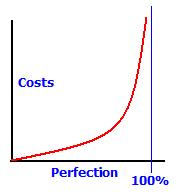 Test cases are here for a long time. Used equally willingly by these who work with heavy-weight processes and those who choose the agile way. They can be stored in an appendix to documentation in BDUF (Big Design Up Front) project or be written on yellow cards along with user stories. Where’s their main value then?
Test cases are here for a long time. Used equally willingly by these who work with heavy-weight processes and those who choose the agile way. They can be stored in an appendix to documentation in BDUF (Big Design Up Front) project or be written on yellow cards along with user stories. Where’s their main value then?
Think about the comparison: test cases for application functionality are the same as unit tests for application code. Except of one thing: it is way harder to write good and complete list of test cases. You may safely assume that’s impossible. This means the main value of test cases isn’t in covering full application functionality because you simply won’t achieve that, no matter how hard you try.
Well, maybe it is a valuable tool for QA engineers? You know, they have some kind of walkthrough for testing sessions. Hm… show me quality engineers who prefer just to follow test cases instead of explore the application by themselves and I’ll tell who should be fired. Testing is such a creative task that there should be no place for follow-the-manual people in QA teams.
OK, test cases don’t ensure completeness of tests and don’t help QA people much. So? Show me the money, as one of my customers used to say. Where’s value?
The main benefit of test cases lies in the activity of writing them down. Or, to be more precise, in the process of thinking about them before they’re written down.
Test case is not much more than short scenario of application usage. Sometimes pretty weird scenario but still. Unfortunately we often forget about this perspective. We tend think in terms of code or requirements and forget about the very basic thing – no class in the code and no requirement alone makes any sense for the end-user.
Looking at application while being in end-user’s shoes benefits in two ways:
– You find black holes of your design which aren’t covered with user stories, or requirements
– You find usability issues since you see whole usage flow, not just a bunch of atomic functions
The main value of writing unit tests is actually within the writing part.


